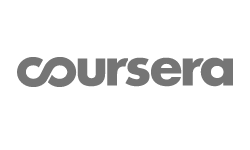Background : Tacrolimus is an immunosuppressive agent and is largely used to prevent graft-versus-host disease in hematopoietic stem cell transplantation patients. Tacrolimus requires therapeutic drug monitoring because of its narrow therapeutic range...
http://chineseinput.net/에서 pinyin(병음)방식으로 중국어를 변환할 수 있습니다.
변환된 중국어를 복사하여 사용하시면 됩니다.
- 中文 을 입력하시려면 zhongwen을 입력하시고 space를누르시면됩니다.
- 北京 을 입력하시려면 beijing을 입력하시고 space를 누르시면 됩니다.

비만환자의 조혈모세포이식 후 체중 적용 기준에 따른 Tacrolimus 초기 농도 비교 = Comparison of the Initial Concentration of Tacrolimus according to Weight Application Criteria after Hematopoietic Stem Cell Transplantation in Obese Patients
한글로보기https://www.riss.kr/link?id=A107495139
- 저자
- 발행기관
- 학술지명
- 권호사항
-
발행연도
2021
-
작성언어
Korean
- 주제어
-
등재정보
KCI등재
-
자료형태
학술저널
-
수록면
195-205(11쪽)
-
KCI 피인용횟수
0
- DOI식별코드
- 제공처
-
0
상세조회 -
0
다운로드
부가정보
다국어 초록 (Multilingual Abstract)
Background : Tacrolimus is an immunosuppressive agent and is largely used to prevent graft-versus-host disease in hematopoietic stem cell transplantation patients. Tacrolimus requires therapeutic drug monitoring because of its narrow therapeutic range. The number of cases where the dose of tacrolimus was reduced in obese patients because the blood concentration was higher than the initial effective therapeutic range (10–15 ng/mL)is increasing. Therefore, this study attempted to assess the adequacy of early tacrolimus dosages and establish more suitable weight-based dosing strategies for obese patients.
Methods : This was a retrospective study, conducted on patients 20 years of age or older who received tacrolimus from the day before transplantation from January 2019 to June 2020 in Seoul St. Mary’s Hospital. The blood concentration of tacrolimus in the actual body weight (ABW) group was obtained from the actual blood collection, from which patient-specific pharmacokinetic parameters were obtained. The expected blood concentration of tacrolimus in the ideal body weight (IBW) group was then calculated. To evaluate the adequacy of the tacrolimus dosage, the average blood concentration and the number of patients within the effective therapeutic range were investigated. To evaluate the risk of developing side effects and the reduction in therapeutic effects, the number of patients above and below the effective therapeutic range and their average tacrolimus level were compared based on ABW and IBW, respectively.
Results : The average blood concentration of 74 patients was 18±5.7 ng/mL in the ABW group and 14±4.5 ng/mL in the IBW group (p<0.001). The number of patients within the effective therapeutic range was 22 (29.7%) in the ABW group and 35 (47.3%) in the IBW group (p=0.043).
The number and average tacrolimus level of the patients above the effective therapeutic range were 50 (67.6%) and 20.6±5.1 ng/mL, respectively, in the ABW group and 25 (33.8%) and 19.1±3.5 ng/mL, respectively, in the IBW group. The number and the average tacrolimus level of patients below the effective therapeutic range were 2 (2.7%) and 8.8±0.7 ng/mL, respectively, in the ABW group and 14 (18.9%) and 8.7±1.0 ng/mL, respectively, in the IBW group. There was no statistical difference in the average tacrolimus levels of the patients above and below the effective therapeutic range (p=0.190 and p=0.908, respectively).
Conclusion : In obese patients, the administration of tacrolimus based on IBW is more preferred than ABW-based administration. However, additional pharmacokinetic model studies are needed.
참고문헌 (Reference)
1 Liu Z, "Weightbased tacrolimus trough concentrations post liver transplant" 49 (49): 79-83, 2019
2 Brunet M, "Therapeutic Drug Monitoring of Tacrolimus-Personalized Therapy : Second Consensus Report" 41 (41): 261-307, 2019
3 World Health Organization, "The Asia-Pacific perspective: redefining obesity and its treatment" 2000
4 정지혜, "Tacrolimus 주사에서 경구로 투여 경로 변경 시 용량 설정비율의 변경에 따른 효과 비교" 한국병원약사회 30 (30): 330-342, 2013
5 Trifilio SM, "Tacrolimus use in adult allogeneic stem cell transplant recipients receiving voriconazole : preemptive dose modification and therapeutic drug monitoring" 45 (45): 1352-1358, 2010
6 Gao Y, "Tacrolimus in adult hematopoietic stem cell transplantation" 15 (15): 803-811, 2019
7 Yanik G, "Tacrolimus (FK506) and methotrexate as prophylaxis for acute graftversus-host disease in pediatric allogeneic stem cell transplantation" 26 (26): 161-167, 2000
8 Watanabe N, "Relationship between tacrolimus blood concentrations and clinical outcome during the first 4 weeks after SCT in children" 45 (45): 1161-1166, 2010
9 Wong R, "Prognostic factors for outcomes of patients with refractory or relapsed acute myelogenous leukemia or myelodysplastic syndromes undergoing allogeneic progenitor cell transplantation" 11 (11): 108-114, 2005
10 Przepiorka D, "Practical considerations in the use of tacrolimus for allogeneic marrow transplantation" 24 (24): 1053-1056, 1999
1 Liu Z, "Weightbased tacrolimus trough concentrations post liver transplant" 49 (49): 79-83, 2019
2 Brunet M, "Therapeutic Drug Monitoring of Tacrolimus-Personalized Therapy : Second Consensus Report" 41 (41): 261-307, 2019
3 World Health Organization, "The Asia-Pacific perspective: redefining obesity and its treatment" 2000
4 정지혜, "Tacrolimus 주사에서 경구로 투여 경로 변경 시 용량 설정비율의 변경에 따른 효과 비교" 한국병원약사회 30 (30): 330-342, 2013
5 Trifilio SM, "Tacrolimus use in adult allogeneic stem cell transplant recipients receiving voriconazole : preemptive dose modification and therapeutic drug monitoring" 45 (45): 1352-1358, 2010
6 Gao Y, "Tacrolimus in adult hematopoietic stem cell transplantation" 15 (15): 803-811, 2019
7 Yanik G, "Tacrolimus (FK506) and methotrexate as prophylaxis for acute graftversus-host disease in pediatric allogeneic stem cell transplantation" 26 (26): 161-167, 2000
8 Watanabe N, "Relationship between tacrolimus blood concentrations and clinical outcome during the first 4 weeks after SCT in children" 45 (45): 1161-1166, 2010
9 Wong R, "Prognostic factors for outcomes of patients with refractory or relapsed acute myelogenous leukemia or myelodysplastic syndromes undergoing allogeneic progenitor cell transplantation" 11 (11): 108-114, 2005
10 Przepiorka D, "Practical considerations in the use of tacrolimus for allogeneic marrow transplantation" 24 (24): 1053-1056, 1999
11 Bauters T, "Practical considerations in the use of intravenous tacrolimus in hematopoietic stem cell transplantation patients. Journal of oncology pharmacy practice" 21 (21): 478-480, 2015
12 De Baerdemaeker LE, "Pharmacokinetics in obese patients" 4 (4): 152-155, 2004
13 Andrews LM, "Overweight Kidney Transplant Recipients Are at Risk of Being Overdosed Following Standard Bodyweight-Based Tacrolimus Starting Dose" 3 (3): e129-, 2017
14 Iwasaki K, "Metabolism of tacrolimus(FK506)and recent topics in clinical pharmacokinetics" 22 (22): 328-335, 2007
15 Sawamoto K, "Mechanisms of lower maintenance dose of tacrolimus in obese patients" 29 (29): 341-347, 2014
16 Hagen PA, "Low mean post-transplantation tacrolimus levels in weeks 2-3 correlate with acute graft-versus-host disease in allogeneic hematopoietic stem cell transplantation from related and unrelated donors" 54 (54): 155-158, 2019
17 Rodrigo E, "High initial blood levels of tacrolimus in overweight renal transplant recipients" 37 (37): 1453-1454, 2005
18 Devine BJ, "Gentamicin therapy" 8 : 650-655, 1974
19 Liu J, "Calcineurin is a common target of cyclophilin-cyclosporin A and FKBP-FK506complexes" 66 (66): 807-815, 1991
20 Ferrara JL., "Advances in the clinical management of GVHD" 21 (21): 677-682, 2008
21 Goker H, "Acute graft-vs-host disease : pathobiology and management" 29 (29): 259-277, 2001
22 Jasiak-Panek NM, "A randomized, open-label pharmacokinetic trial of tacrolimus extended-release dosing in obese de novo kidney transplant recipients" 33 (33): e13640-, 2019
동일학술지(권/호) 다른 논문
-
- 한국병원약사회
- 김혜린
- 2021
- KCI등재
-
- 한국병원약사회
- 구민희
- 2021
- KCI등재
-
심장외과 중환자실에서 임상약사의 약처방 중재 활동 분석
- 한국병원약사회
- 손유민
- 2021
- KCI등재
-
흡입기 사용법 평가도구를 이용한 복약지도가 질병 개선에 기여하는가?
- 한국병원약사회
- 고지후
- 2021
- KCI등재
분석정보
인용정보 인용지수 설명보기
학술지 이력
| 연월일 | 이력구분 | 이력상세 | 등재구분 |
|---|---|---|---|
| 2028 | 평가예정 | 재인증평가 신청대상 (재인증) | |
| 2022-01-01 | 평가 | 등재학술지 유지 (재인증) |  |
| 2019-01-01 | 평가 | 등재학술지 유지 (계속평가) |  |
| 2016-01-01 | 평가 | 등재학술지 선정 (계속평가) |  |
| 2015-01-01 | 평가 | 등재후보학술지 유지 (계속평가) |  |
| 2013-01-01 | 평가 | 등재후보학술지 유지 (기타) |  |
| 2012-01-01 | 평가 | 등재후보학술지 유지 (기타) |  |
| 2010-07-02 | 학회명변경 | 한글명 : 병원약사회 -> 한국병원약사회영문명 : 미등록 -> The Korean Society of Health-System Pharmacists |  |
| 2010-01-01 | 평가 | 등재후보학술지 선정 (신규평가) |  |
학술지 인용정보
| 기준연도 | WOS-KCI 통합IF(2년) | KCIF(2년) | KCIF(3년) |
|---|---|---|---|
| 2016 | 0.04 | 0.04 | 0.04 |
| KCIF(4년) | KCIF(5년) | 중심성지수(3년) | 즉시성지수 |
| 0.05 | 0.05 | 0.27 | 0 |





 KCI
KCI






